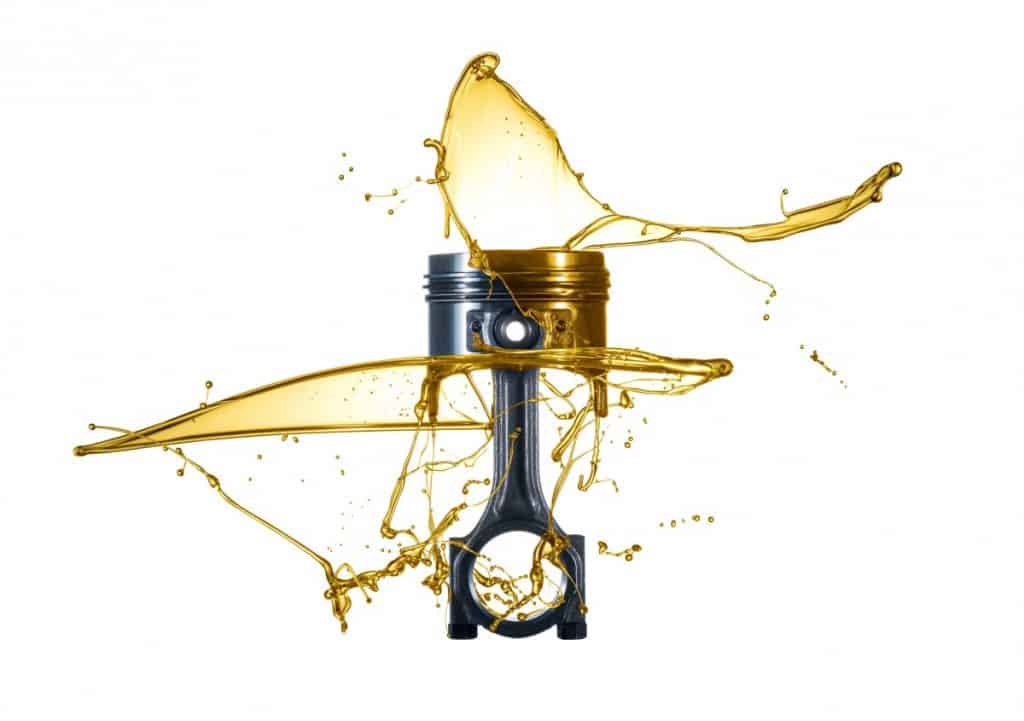I was all out of oil for my ATV, and I have quite a bit of car oil. So, I was curious whether I can use car oil in my ATV, and whether they’re different. I did a tonne of research and asked some mechanics and here’s what I found.
As a general rule, ATV oil is different from car oil. ATV oil has special additives in it that are required because ATVs have a wet clutch. The other main concern is that you should use 4 stroke oil for 4 stroke ATVs and 2 stroke oil for 2 stroke ATVs.
There are a range of different oil thicknesses that are designed for different temperature conditions. So, below I will explain what oil is recommended for the most popular ATV brands. As well as, more info about the differences between ATV oil and car oil.

Can I Put Car Oil in My 4 Stroke ATV?
I called around a few ATV retailers, and workshops, and some mechanics said oil is oil, and as long as it’s 10W – 40 it’s fine. Whereas, others said that because of the wet clutch you need to use oil specifically designed for ATVs.
There are a few anecdotal stories online from people who have used all-purpose engine oil in their ATV for many years, and some as long as 30 years, without any issues at all.
With that being said, in my opinion, it’s always best to use the oil recommended in your owner’s manual, that way you won’t need to worry about it.
I’ve done a tonne of research into the recommended oil for the most popular ATVs, such as Polaris, Suzuki, Yamaha, and Suzuki. The overall recommendation is to use 4 stroke 10W – 40 oil that has a specific API, and SAE.
Here’s a table that shows the recommended oil for the most well known ATV makes and models:
| Make and Model | Recommended Oil & Viscosity |
|---|---|
| Suzuki Kingquad 400, 500, 750 | 10W – 40 – Suzuki Performance 4 or Equivalent. |
| Kawasaki – Brute Force 300, 750, 750i | 10W – 40, 4 Stroke |
| Honda – Rinchin, Rancher, Foreman | 10W–30 – Pro Honda GN4 4-stroke oil or Honda 4-stroke oil |
| Make and Model | API | JASO |
|---|---|---|
| Suzuki Kingquad 400, 500, 750 | SG, SH, SJ, SL, SM or SN | MA (MA1, MA2) |
| Kawasaki – Brute Force 300, 750, 750i | SG, SH, SJ, SL, or SM | MA, MA1, MA2 |
| Honda – Rinchin, Rancher, Foreman | SG | MA |
These are all full-sized ATVs. There are also youth ATVs, which have a smaller engines. The recommended oil can have a different API depending on the model.
This makes it very important to check the owner’s manual for your specific ATV to ensure that you’re using the right one. However, overall you can see that most recommend 10W – 40 or similar 4 stroke oil.
Certain ATVs have 2 stroke engines, which don’t use 4 stroke oil. However, these are rarer, and generally, most ATVs have a 4 stroke engine.

Choose the right oil viscosity oil for your climate
The number on an oil refers to how thick it is, the scientific term used is viscosity. It’s calculated through experiments that measure how far and how much of the material travels over a distance, over a period of time.
A lower viscosity number indicates a thinner liquid that will travel further. By comparison, a higher viscosity number is thicker and will travel less distance.
But, temperature plays a key role. A hotter liquid than the same liquid in cold temperatures. For that reason, two numbers are given to describe how thick or thin an oil is.
The first number with the W after it stands for winter. Which is the viscosity of the oil at cold temperatures. And the second number is how thick it is at the engine operating temperature. Since cold temperatures make oil thicker, the first number is generally smaller.
10W – 40 is made for temperature ranges between 10 °F to 110 °F (-10 °C to 40 °C). Which covers virtually all climates. Different viscosity oils are made for extremely cold temperatures and are better suited if you regularly ride your ATV in extremely cold temperatures.
If you suspect you’ll be riding your ATV regularly in temperatures outside of 10 °F to 110 °F (-10 °C to 40 °C), then it’s best to look up what oil is best for your climate. This can be parts of Canada and the northern states in the USA where temperatures can often go below 0 °F (-17.7 °F).

Is Synthetic Oil OK for an ATV?
There are three different types of engine oil, synthetic, semi-synthetic, and mineral/regular. Synthetic oil is generally more expensive because it undergoes more processing. But, can you use synthetic oil in an ATV?
Synthetic oil is generally OK for an ATV. But, it’s always best to refer to the manufacturer’s recommendations. Many ATV manufacturers such as Kawasaki say that synthetic, semi-synthetic, and mineral oil can all be used in their ATVs. But, others do not provide any recommendations regarding this.
And they simply recommend their specially made engine oils for their ATVs. Some brands sell the oil they recommend for their ATVs in synthetic, semi-synthetic, and mineral oil. In my opinion, it doesn’t appear to make much of a difference based on my research.
But, always double-check the owner’s manual for your specific model to ensure they don’t state any specific recommendations.
What Kind of Oil Does My ATV Use?
So, then at the end of the day what oil you should use in your ATV. Here’s what I found.
As a general rule, 10W – 40 engine oil is recommended by all of the leading ATV manufacturers. However, some recommend 10W – 30. This is true of smaller ‘Youth’ ATVs, and full-sized ATVs. However, refer to your owner’s manual to see any specific requirements regarding the SAE and API.
The SAE and API are standards put out by institutions that do testing on various oils and formulate new and more efficient oils.
The SAE and API can differ by model, and certain SAE and API engine oils are not recommended in certain ATV models. Therefore, it’s always best to check your owner’s manual to see specifically what oil they recommend.
